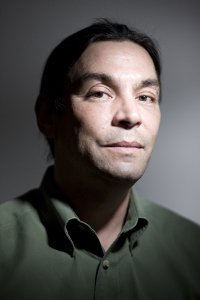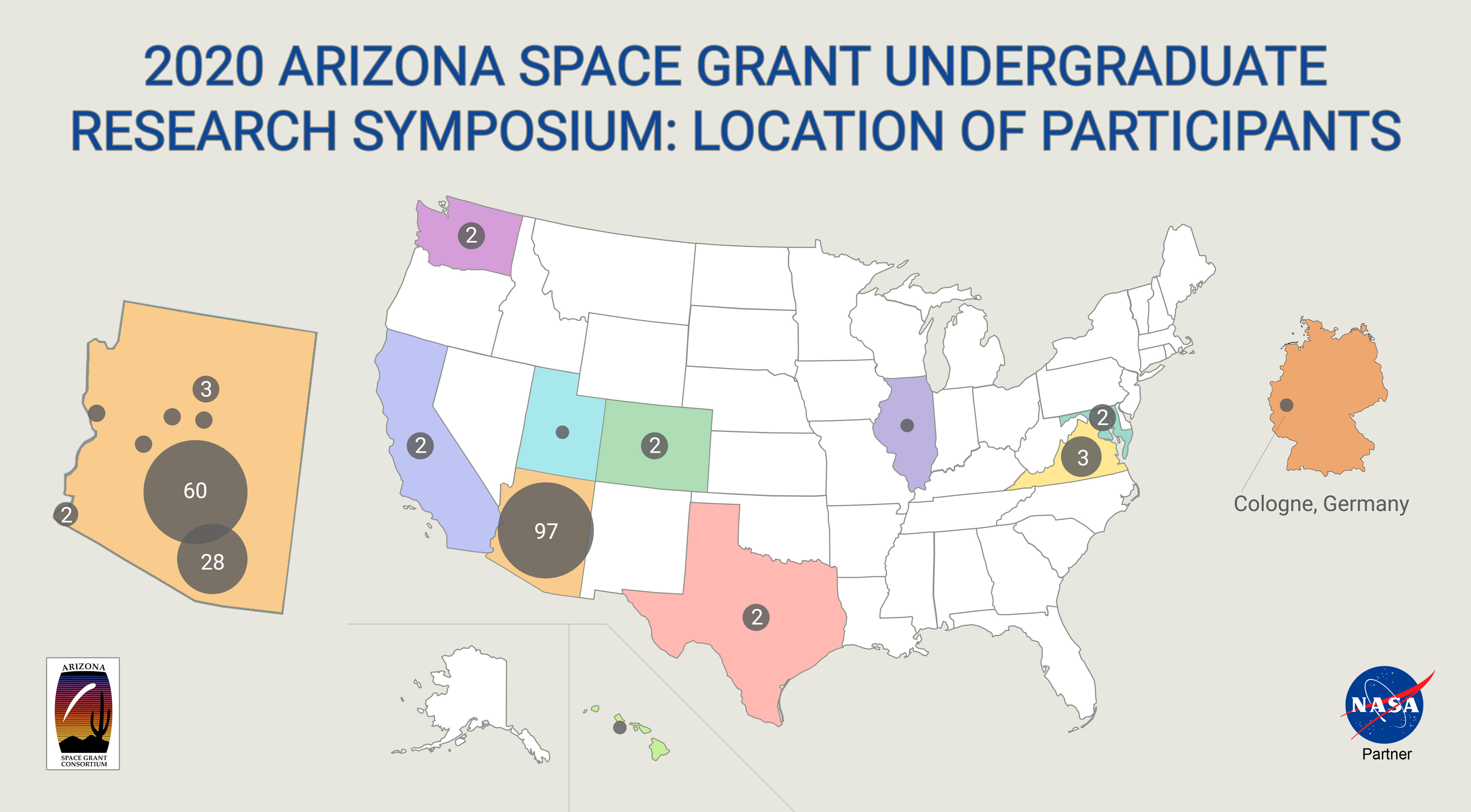The annual Arizona/NASA Space Grant Undergraduate Research Symposium is a statewide event that includes students and faculty from The University of Arizona, Arizona State University, Northern Arizona University, Embry-Riddle Aeronautical University, AZSGC community colleges and affiliates. The all-day Symposium consists of presentations on a variety of topics based on research done by Space Grant interns and scholars during the current academic year.
The 2021 Statewide Symposium was a fully virtual event
Download the 2021 Symposium Booklet (PDF)*
*This Booklet contains all abstracts, presentations, mentors, and more.
View 2021 Space Grant Symposium Presentations
Click on the links below to submit abstracts and presentations on or before the due date listed. Review these resources for creating documents and presenting at this event.
| March 19th, 2021 | Due: Student Abstracts & RSVP |
| April 2nd, 2021 | Due: Intern Presentations |
| April 5th, 2021 | Due: Spring 2021 Graduating Seniors Degree Completion Form |
| April 9th, 2021 | Due: ASCEND Team PowerPoint Presentations |
| April 10th, 2021 | Due: Guest RSVPs |
| April 12th, 2021 | All Registered Attendees (Students & Guests) Receive Symposium Booklet with Zoom Links |
| April 17th, 2021 | Symposium! |
April 17, 2021 Symposium Information

Keynote Speaker:
Dr. Robert Pappalardo
Europa Clipper Mission Project Scientist
Formerly Cassini Project Scientist at NASA JPL
Photo: NASA JPL
Learn more on the NASA Europa Clipper website
Keynote Talk Title: Journey to Europa
See a recording of Dr. Pappalardo's talk here
Jupiter's moon Europa may have an internal ocean of liquid water, along with the chemistry and energy that life requires. In the cold reaches of the outer solar system, the uppermost portion of Europa’s icy shell forms a rock-hard skin which fractures and deforms to create cracks, ridges, and bands. Galileo spacecraft data also tell of a warm interior, with a convecting icy shell above a liquid water ocean, leading to partial melting and formation of chaotic terrains. NASA’s Europa Clipper mission, currently under construction, will interrogate Europa’s ice shell, ocean, composition, geology, and current activity. It will include a highly capable suite of remote sensing and in situ instruments, to explore Europa and investigate its habitability from Jupiter orbit through multiple close flybys of Europa. This talk will review our current knowledge of Europa, the status and objectives of the Europa Clipper mission, and how Europa exploration has affected my own career path.
Biography & Research Interests Credit: NASA JPL
Biography
In 1986 he received his B.A. in Geological Sciences from Cornell University, and in 1994 he obtained his Ph.D. in Geology from Arizona State University. As an affiliate member of the Galileo Imaging Team while a researcher at Brown University, he worked to plan many of the Galileo observations of Jupiter's icy Galilean satellites. From 2001-2006, he was an Assistant Professor of Planetary Sciences in the Astrophysical and Planetary Sciences Department of the University of Colorado at Boulder, and he continues to mentor graduate student researchers. Along the way, he has worked with various science museums and organizations to bring the excitement of astronomy and planetary exploration to the public.
Research Interests
Pappalardo's research focuses on processes that have shaped the icy satellites of the outer solar system, especially Europa and the role of its probable subsurface ocean. Europa research includes the possibility that solid-state convection has played an important role in the satellite's history, investigation of regions of separation and spreading of the satellite's icy lithosphere, and implications of the surface geology for lithospheric properties and the existence of a liquid water ocean beneath the icy surface. Additional recent research involves the nature, origin, and evolution of bright grooved terrain on Jupiter's moon Ganymede, specifically the style of tectonism and implications for the satellite's geological history. Also, he is investigating the geological implications of geyser-like activity on Saturn's moon Enceladus and of processes that shape the surface of Saturn's moon Titan.

2020 was our very first virtual Symposium. Check out all of the places our participants called in from!

